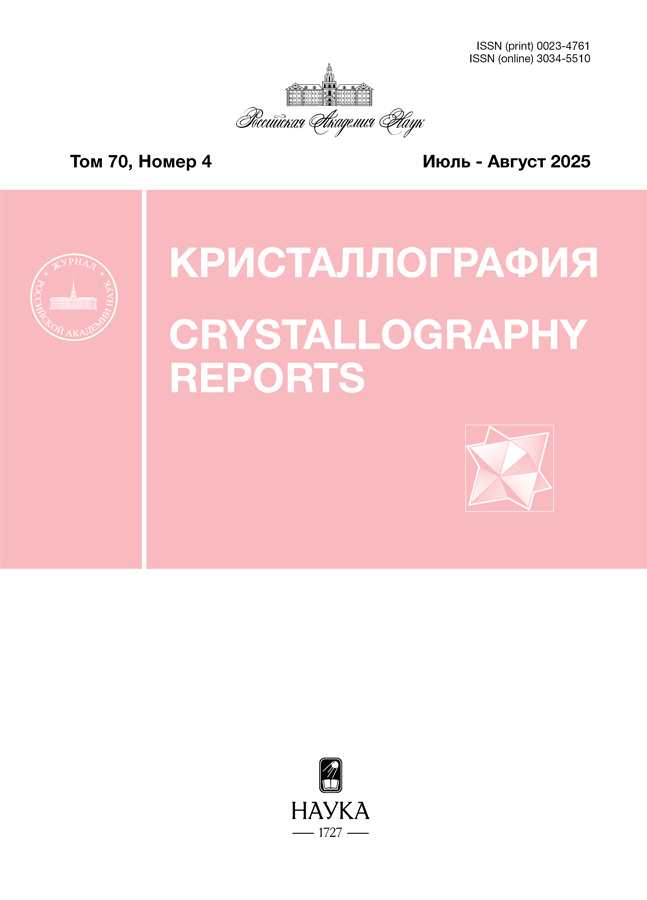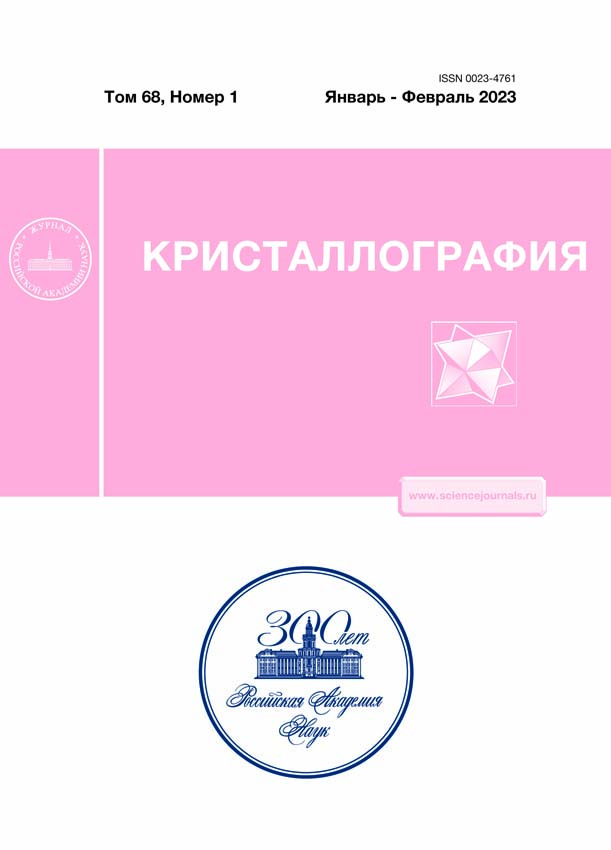Dissolution Energies of Impurities and Their Clusters in Powellite CaMoO4
- Authors: Dudnikova V.B.1, Eremin N.N.1
-
Affiliations:
- Moscow State University, 119991, Moscow
- Issue: Vol 68, No 1 (2023)
- Pages: 11-17
- Section: КРИСТАЛЛОХИМИЯ
- URL: https://ter-arkhiv.ru/0023-4761/article/view/673528
- DOI: https://doi.org/10.31857/S002347612301006X
- EDN: https://elibrary.ru/DNRRBM
- ID: 673528
Cite item
Abstract
The impurity defects in CaMoO4 are simulated by the method of interatomic potentials. The dissolution energies of monovalent, divalent, and trivalent impurities are calculated, their comparative analysis is performed, and the main patterns of change are presented. The most probable localization of defects is determined. In the case of heterovalent impurities, the most energetically favorable mechanism for their charge compensation has been found, both due to intrinsic crystal defects and under conjugate isomorphism. It is shown that the formation of impurity clusters with intrinsic crystal defects and (to a greater extent) the formation of clusters of different-valence impurities may significantly reduce the dissolution energy of impurities. The formation of neutral clusters of univalent impurities with oxygen vacancies not only makes it possible to increase the solubility of impurities but also reduces the probability of the formation of color centers.
Keywords
About the authors
V. B. Dudnikova
Moscow State University, 119991, Moscow
Email: VDudnikova@hotmail.com
Россия, Москва
N. N. Eremin
Moscow State University, 119991, Moscow
Author for correspondence.
Email: VDudnikova@hotmail.com
Россия, Москва
References
- Hu Y., Zhuang W., Ye H. et al. // J. Alloys Compd. 2005. V. 390. P. 226.
- Dixit P., Chauhan V., Kumar P., Pandey P.C. // J. Luminescence. 2020. V. 223. P. 117240.
- Zhuang R.Z., Zhang L.Z., Lin Z.B., Wang G.F. // Mat. Res. Innovations 2008. V. 12. P. 62.
- Шилова Г.В., Сироткин А.А., Зверев П.Г. // Квантовая электроника. 2019. Т. 49. С. 570.
- Mikhailik V.B., Henry S., Kraus H., Solskii I. // Nucl. Instrum. Method Phys. Res. A. 2007. V. 583. P. 350.
- Lee S.J., Choi J.H., Danevich F.A. et al. // Astropart. Phys. 2011. V. 34. P 732.
- Bosbach D., Rabung T., Brandt F., Fanghanel T. // Radiochim. Acta. 2004. V. 92. P. 639.
- Taurines T., Boizot B. // J. Am. Ceram. Soc. 2012. V. 95. P. 1105.
- Lin Q., Feng X. // J. Phys.: Condens. Matter. 2003. V. 15. P. 1963.
- Chen T., Liu T., Zhang Q. et al. // Nucl. Instrum. Method Phys. Res. A. 2007. V. 575. P. 390.
- Дудникова В.Б., Антонов Д.И., Жариков Е.В., Еремин Н.Н. // ФТТ. 2022. Т. 64. С. 1452.
- Gale J.D. // Z. Kristallographie. 2005. B. 220. S. 552.
- Mott N.F., Littleton M.J. // Trans. Faraday Soc. 1938. V. 34. P. 485.
- Александров В.Б., Горбатый Л.В., Илюхин В.В. // Кристаллография. 1968. Т. 13. С. 512.
- Bush T.S., Gale J.D., Catlow C.R.A., Battle P.J. // Mater. Chem. 1994. V. 4. P. 831.
- Shannon R.D. // Acta Cryst. A. 1976. V. 32. P. 751.
Supplementary files














